"Strategic Burns for Safer Lands and Healthier Ecosystems"
Prescribed Fire Planning & Implementation
WILDFIRE PROTECTION
Prescribed fire is a safe and effective tool for protecting homes and communities from wildfire. By reducing excess vegetation and fuel loads, it lowers the risk of intense, uncontrolled wildfires. This method also promotes healthier ecosystems and creates defensible space around properties, ensuring better resilience and safety for homeowners while supporting long-term landscape restoration and sustainability.
ECOSYSTEM RESTORATION
Prescribed fire is a powerful tool for ecosystem restoration, mimicking natural fire cycles to rejuvenate landscapes. It reduces invasive species, promotes native vegetation, and enhances wildlife habitats. Controlled burns also improve soil health and nutrient cycling, fostering biodiversity and ecosystem resilience. As a safe, planned process, prescribed fire restores balance to fire-adapted environments while preventing catastrophic wildfires.
FUEL LOAD REDUCTION
Prescribed fire is an effective method for reducing fuel loads, minimizing the risk of severe wildfires. By safely burning excess vegetation, it decreases the buildup of flammable materials like dry grasses and brush. This process creates safer landscapes, protects communities, and supports ecosystem health. Prescribed burns are carefully planned and executed to prioritize safety and environmental sustainability.
Prescribed Fire for Property Managers
For property owners looking to create defensible space and reduce wildfire risk, prescribed fire is a highly effective tool. By carefully applying fire to targeted areas, you can reduce excess vegetation and fuel loads around your home, which lowers the likelihood of a wildfire spreading to your property. A well-planned burn helps create a buffer zone, improving your property’s resilience to wildfires.
In addition to wildfire risk reduction, prescribed fire can be used to improve habitats, manage invasive species, and restore ecosystems. It promotes healthy vegetation growth, enhances soil quality, and encourages biodiversity by removing dead plant material. A Burn Boss can assist in developing a tailored burn plan, ensuring that the burn is carried out under ideal conditions and with the necessary safety protocols in place.
Using prescribed fire is an environmentally beneficial and proactive way to protect your property while supporting ecological health. Proper planning and professional oversight are key to success.
HELP US IMPLEMENT “GOOD FIRE" IN OUR COMMUNITIES.
HOW WE CAN ASSIST YOU BRING "GOOD FIRE" TO YOUR PROPERTY
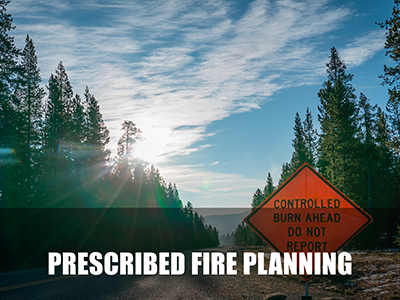
PRESCRIBED BURN PLANNING
We provide professional Prescribed Burn Planning services to reduce wildfire risks, restore ecosystems, and promote safer communities. Our team creates customized plans tailored to your property, handles necessary permits, and ensures compliance with safety regulations. With expert execution, we help reduce fuel loads, enhance landscape resilience, and protect homes and wildlife through safe, effective prescribed fire practices.

STATE CERTIFIED BURN BOSS
We offer professional Burn Boss services to ensure safe, efficient prescribed burns. Clients benefit from expert leadership, including site assessments, burn plan development, permitting, and coordination with agencies. Our Burn Boss oversees fire operations, prioritizes safety, and ensures compliance with regulations. With our services, clients gain peace of mind, reduced wildfire risk, and improved ecosystem health through expertly managed burns.
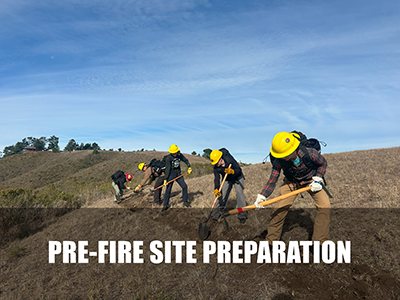
PRE-FIRE SITE PREPARATION
We provide comprehensive site preparation services for prescribed burns, ensuring safety and efficiency. Our team clears vegetation, establishes firebreaks, and removes excess fuel to create controlled burn zones. We handle equipment needs and assess site conditions to minimize risks and maximize effectiveness. Proper site preparation enhances burn success, reduces wildfire hazards, and supports healthier, more resilient landscapes.
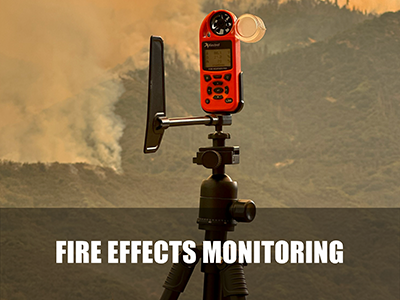
Fire Effects Monitoring
Our Fire Effects Monitoring services evaluate the ecological outcomes of prescribed fires. We assess vegetation changes, soil health, wildlife impacts, and fuel load reduction to ensure burn objectives are met. Using scientific methods, we provide detailed reports and insights to guide future management decisions, helping maintain ecosystem health, improve resilience, and support the long-term success of fire-adapted landscapes.
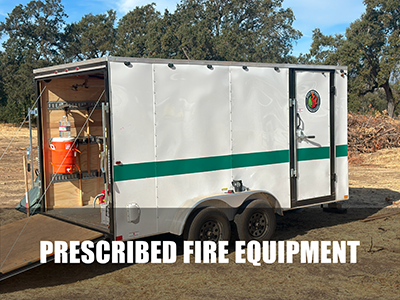
PRESCRIBED FIRE EQUIPMENT
We offer a wide range of specialized equipment for prescribed burns, including fire engines, drip torches, pumps, hoses, and protective gear. Our well-maintained fleet ensures efficient, safe, and controlled burns. Equipped with the latest tools, we support effective fuel reduction, fireline construction, and safety management, providing everything necessary for successful prescribed fire operations and landscape restoration.
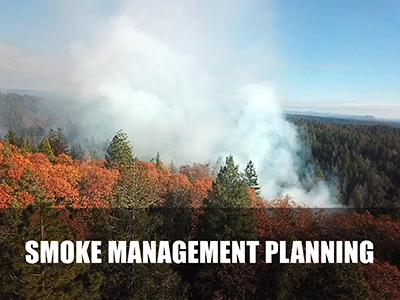
SMOKE MANAGEMENT PLANNING
Our Smoke Management Planning services help minimize the impact of prescribed burns on air quality and surrounding communities. We assess weather conditions, wind patterns, and local regulations to create tailored plans that safely manage smoke dispersion. By monitoring and controlling smoke, we ensure compliance with air quality standards, protect public health, and enhance the effectiveness of prescribed fire operations.
"Empowering Excellence, Uniting Expertise: Igniting Tomorrow's Fire Practitioners"
frequently asked questions about Prescribed Fire
A California Certified Burn Boss (CARX) is a trained and qualified professional who manages prescribed fires. They ensure the burn is conducted safely, effectively, and in compliance with state regulations.
A certified Burn Boss brings expertise in fire behavior, safety protocols, legal compliance, and risk management, ensuring your prescribed fire meets all objectives while minimizing risks to people and property.
A CARX Burn Boss is trained through the California State Fire Marshal and meets strict requirements for prescribed fire management, including knowledge of fire behavior, smoke management, safety, and environmental regulations.
A Burn Boss oversees the entire burn operation, from planning and preparing the site to executing the burn safely. They ensure compliance with regulations, manage personnel, and monitor fire behavior during the burn.
Hiring a certified Burn Boss ensures liability protection under California law, including access to the Prescribed Fire Claims Fund, which covers costs related to fire escapes, suppression, and damages.
A Burn Boss ensures comprehensive safety measures, including weather assessments, firebreak creation, personnel training, emergency response plans, and continuous monitoring to manage fire risks during the burn.
Yes, a Burn Boss can assist with obtaining the necessary permits for prescribed burns, including air quality permits, burn permits from local authorities, and any other required documentation to ensure legal compliance.
A certified Burn Boss helps plan and execute a burn that meets your goals, whether it's reducing wildfire risk or improving habitats. They ensure the burn is done under optimal conditions and that objectives are achieved with minimal risk.
"Empowering Excellence, Uniting Expertise: Igniting Tomorrow's Fire Practitioners"
free site visit
LEARN MORE ABOUT PRESCRIBED FIRE AND HOW IT CAN BE USED TO PROMOTE HEALTHY FORESTS
FROM OUR BLOG
Smoke Management Planning for Prescribed Fire: Ensuring Safety & Compliance Prescribed fire is an...
Fire Effects Monitoring for Prescribed Fire: Why It Matters and How It’s Done Prescribed fire is a...
Best Practices for Prepping Your Forested Land for Prescribed Fire: Control Lines & Fuel Reduction Prescribed...

